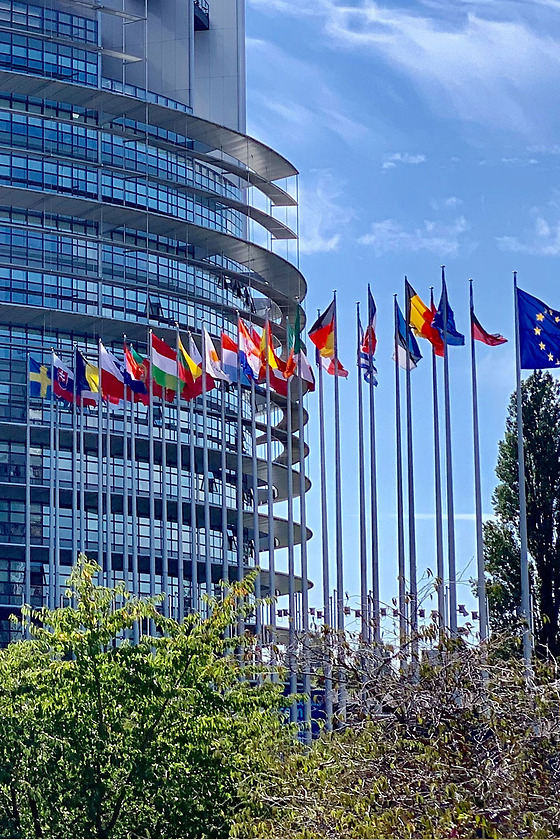A patent is a legal protection that grants the holder the right to prevent others from manufacturing, using, selling, or importing an innovation for a limited time, up to 20 years. By patenting your invention, you can prevent others from commercially exploiting your invention without permission, creating a foundation for commercial success for you. Here you will learn everything about how patents work, how to apply, and what is required for your innovation to qualify as patentable. Explore the benefits of patent protection and how it can strengthen your competitiveness in the market!
A product, process, or service can often be protected by several different types of intellectual property rights, such as patents, trademark registration, and design protection.
A patent gives its holder the exclusive right to the invention covered by the patent. The exclusive right means that the patent holder can prevent others from manufacturing, selling, or importing the invention for a limited time (a maximum of 20 years). The patent holder thus has a competitive advantage but is in return obliged to publicly disclose the invention. Disclosure helps others to continue developing the invention and drives development forward.
Design registrations can be used to protect the appearance of a product.
Trademark registrations can be used to give formal exclusive rights to a trademark.
For an invention to be patentable, it needs to meet the following three criteria:
The invention must not be previously known. To meet the condition of novelty, it is important to keep the invention secret until the application date. This means it must not have been published, presented, or used publicly anywhere in the world before the application is submitted.
The invention must differ significantly from everything known before the application date and must not be obvious to someone skilled in the relevant technical field.
The invention must be capable of being industrially utilized, which means it must have a technical character and be reproducible.

The game is not necessarily over even if you have accidentally disclosed your invention before submitting your patent application. Some countries apply a so-called "grace period" of up to 12 months after you have disclosed your own invention. This means that within this period, you can still submit a patent application in these countries without your disclosure being considered novelty destroying.
Keeping it secret Since a patent application becomes public and the exclusive right only applies for a limited time, it may sometimes be better to keep your invention secret and not apply for a patent. However, this only suits certain types of products and processes. There is also always a risk that a secret may be revealed.
An inventor can also consider publishing their invention to prevent others from seeking a patent and obtaining exclusive rights for the same technology, as the technology would then no longer be new and thus not patentable. We are experts in assessing which path is best to take.
Anyone who exploits an invention in a country where the invention is patent protected without the permission of the patent holder commits a patent infringement. The patent holder can try to reach a negotiated solution with the infringer or pursue the matter in court in the country where the infringement occurs. Thus, the patent holder is protected against someone else using the patented technology without permission. In contrast, use in countries where the invention is not patent protected cannot be prevented.
A patent is a national exclusive right and must be applied for in each country where protection is desired. However, to facilitate this, there are international agreements and regional collaborations.

You can submit your application directly in each country where you wish to obtain protection and pay the required fees. For example, you can start with a Swedish application submitted to the Swedish Patent and Registration Office (PRV). Within 12 months from the filing date of the Swedish application, the so-called priority year, you can proceed to submit the same application in other countries where you want to try to protect your invention. The application is then processed in each country by the national patent office there.
If you want a patent in several European countries, it may be more cost-effective to submit a patent application to the European Patent Office (EPO). The EPO acts as a central patent office for the European countries that are members of the European Patent Convention (EPC). The EPO examines and processes your patent application and then issues a central decision recognized by the countries that have joined the EPC. If your application is granted a patent by the EPO, you must decide in which of the EPC countries you want the patent to be valid and validate your patent in each country by paying certain fees, and in some countries additionally submitting a translation of the patent.
There is an international agreement, the Patent Cooperation Treaty (PCT), which provides you with an international preliminary patentability assessment of your application. This international route can be chosen directly as the first application or within 12 months from the filing of a national or regional (e.g. European) application. With the international route, you can wait up to 30 months from the filing of the first application before proceeding with the application in the countries where you want to protect your invention. Compared to the national route, you can thus delay the decision on which countries to seek patents in. This gives you the opportunity to postpone the costs associated with foreign applications and more time to evaluate the potential of your invention. Through the PCT procedure, you can seek patents in over 100 countries based on the international application.
Patents are granted, in Sweden and most other countries, for a period of 20 years from the filing date. For certain categories of inventions, mainly pharmaceuticals, the patent period can be extended further.